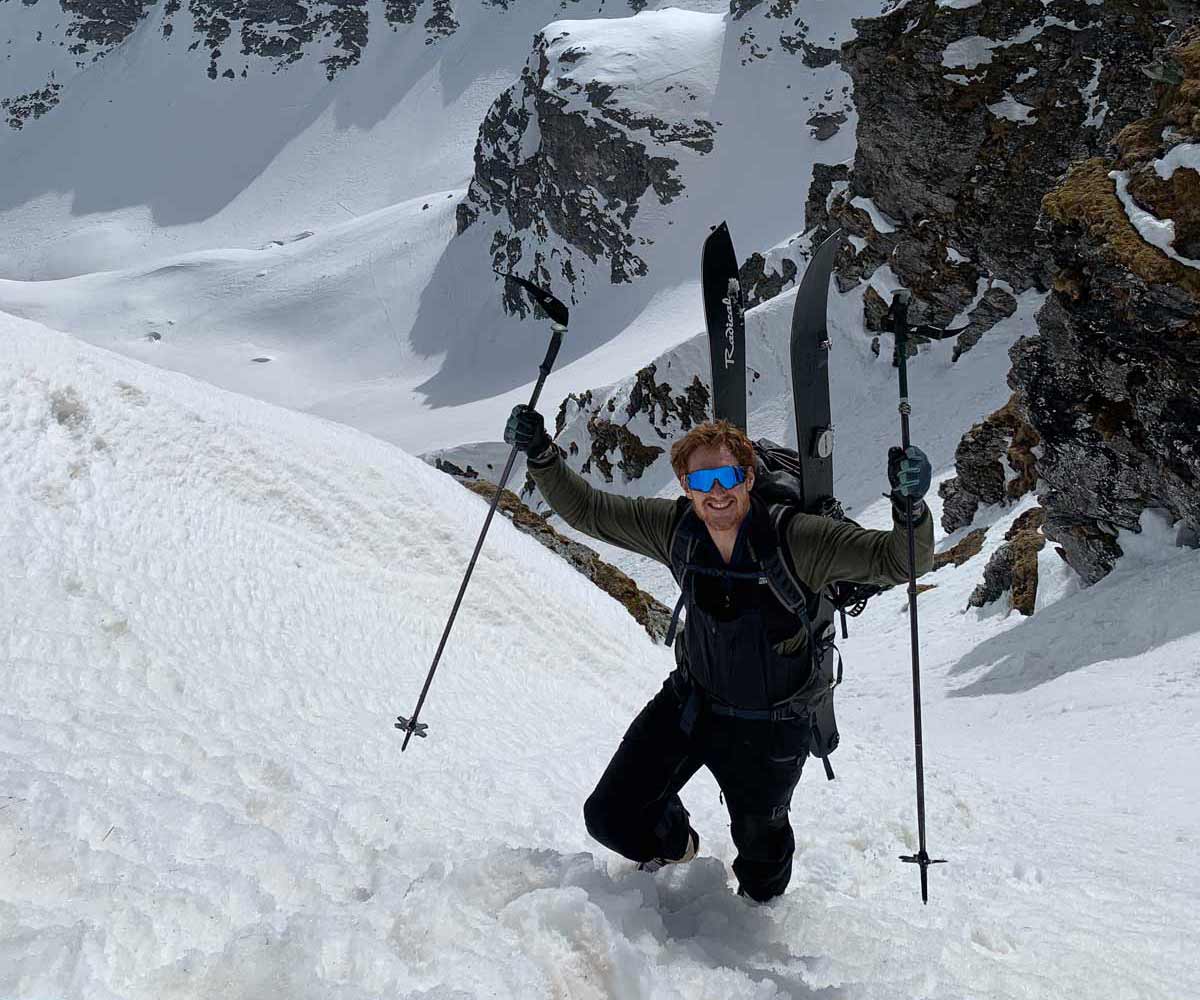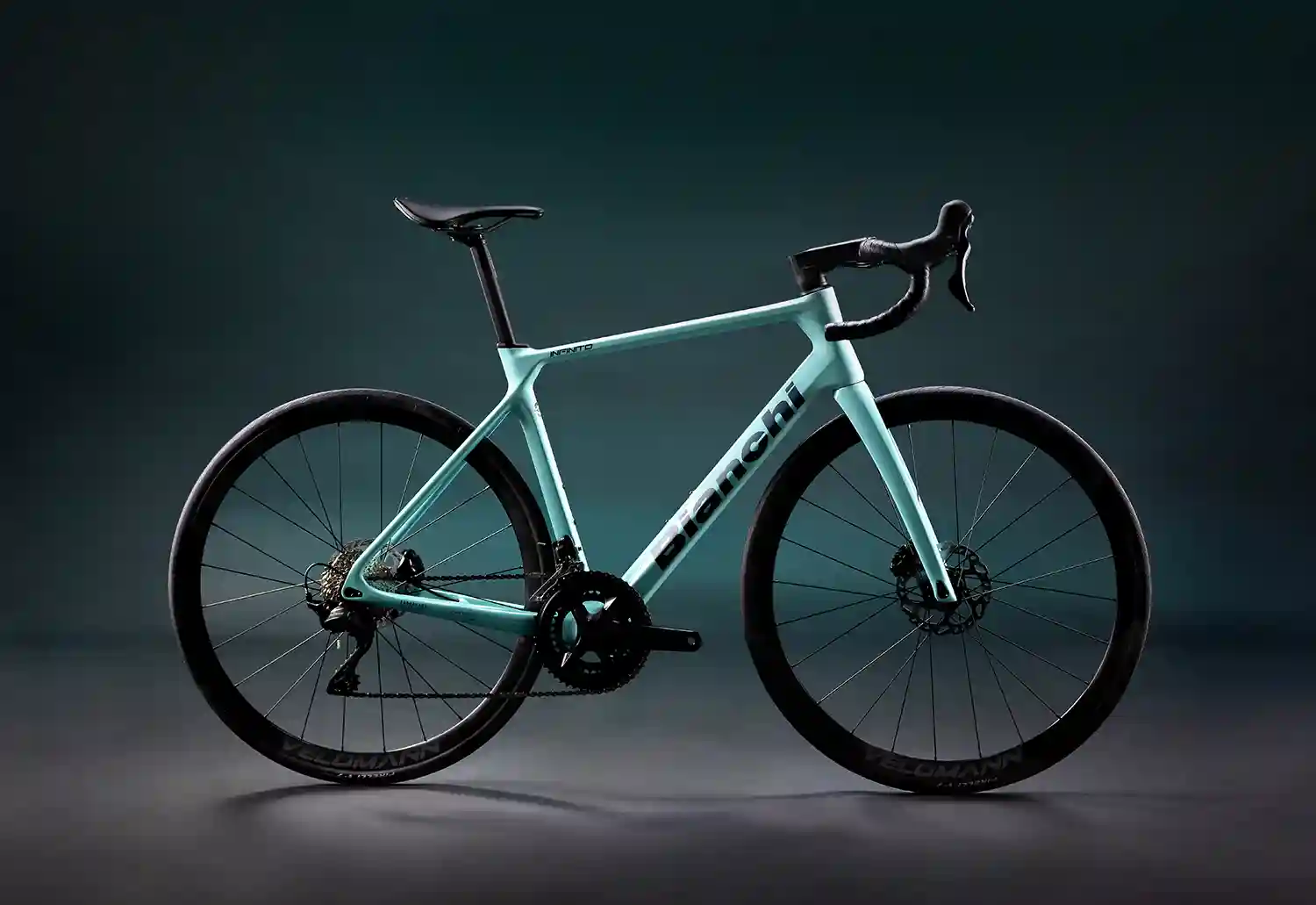
Patrick Stauber, 38, Managing Director at Radical, full-blooded splitboarder and mountain enthusiast
The sustainability of winter sports is a major public issue today, as it is in the interest of all concerned. Those who are inconsiderate of nature no longer have much of it. So it is important to take care of it, and everyone can make their contribution to this.
Introduction
Climate change is on everyone's mind. But how do you deal with it? How can you behave optimally, do your part for a sustainable future and still pursue your passion? Where exactly the problem lies with the climate and winter sports was aptly described in a recent article by the Swiss Institute for Snow and Avalanche Research SLF. SLF - Snow and climate change I would like to point out tips and suggestions here for a sensible, future-oriented approach. We should use all possibilities to make our beloved winter sports as sustainable as possible. Since a complete renunciation is out of the question for most of us -. Switching off from everyday stress, physical activity in the fresh air, airing the head, happiness hormones - we have to find solutions that are in harmony with nature in the best possible way. Here are my six tips for sustainable winter sports:
Tip 1: Rethink your mobility
Hotels, lifts and snow cannons consume a lot of energy, but the biggest environmental impact of a winter vacation is the journey to and from the resort. Every year, around 50 million tourists reach the Alps and over 80 percent of them travel by car. This means that the majority of CO2 emissions in winter tourism are mainly caused by the driving distances to the winter sports regions.
In Switzerland there is an excellent public transport network to almost all ski resorts. Often there are even combination tickets (Snow'n'Rail), where you get the ski pass at a discount. A stress- and congestion-free journey is even included for free with every trip. For tourers, however, not all destinations are well served by public transport. The last undeveloped kilometers can often be covered in other ways than by your own car. Thus, in 16 regions "Bus Alpine buses" to points relevant to tourism. Other eight Snow tour bus-trails reach starting points of ski and snowshoe tours and on the AlpenTaxi website you will find contact details for a wide range of transport options in the Alpine region.
If you want to drive your own car to remote or not so well connected ski resorts, you should carpool. Via the website of Go Shred or hitchhike you can find and offer rides.
Tip 2: Stay close to you
Why go far when the best is so close? Of course, heli tours in Alaska, powdering in Japan or hiking in the Caucasus are very appealing. But if the best spots in the Alps are practically at your feet, then save yourself the flight overseas or to Asia, which will only leave a very, very large carbon footprint. And do you really know all the ski resorts or mountain peaks in and around Switzerland? A trip to Welschland or Ticino definitely already feels like a vacation. A trip to Chamonix will broaden your horizons and Austria is also close by and has a lot to offer.
Tip 3: Support sustainable ski resorts and accommodations
As a basic principle, longer stays in one place (ski vacations) are better than many short trips spread over the weekends. See point 1 - emissions on arrival and return. But now the agony of choice, where to go? Various Swiss ski resorts convince with remarkable projects and proactive commitment to people and the environment. Take Engelberg, for example: there, all the mountain lifts are 100 % powered by hydropower and thus by virtually CO2-neutral electricity. An overview of sustainable ski resorts in Switzerland can be found here.
For the search for suitable accommodation, the Swiss sustainability label "Ibexfairstay" hotel operations are certified in order to make the sustainable performance of a hotel comparable and to promote it. They guarantee the seriousness, neutrality and credibility of the ibex fairstay label.
For destinations in Austria, Italy, Germany and Slovenia, several places have become the Alpine Pearls They are among the "pearls" of environmentally friendly tourism. Because: For example, they do without artificially groomed slopes, offer good connections to public transport, use regenerative energies and only allow a certain amount of skiers on the mountain to avoid overcrowding.
Tip 4: Consume less - buy durable products
It starts with the equipment: You don't have to have the latest gear stuck to your feet every year. A good pair of skis or a suitable snowboard will last for many years. Get professional advice when buying and test the material in advance, so that you are happy with it for a long time.
At Radical, we've been building extremely durable products since 1984. Many of our customers use the same model for well over ten years. We even had it tested in a machine once; only after a million deflections were the first signs of fatigue detected.
Make sure that you regularly maintain your skis or snowboards and give them to the service. But do not overdo it. Every time you sharpen your skis or snowboards, you lose some of the base and edge. Only give your products into the hands of experienced professionals. Untrained people will grind away much more than necessary. Your ski or board can be serviced about 10 - 15 times in total. When it comes to wax, stay away from fluorine additives. There are now ecological substitutes. Even the FIS (Fédération Internationale de Ski) has banned waxes with fluorine additives from competition sports.
Another way to protect nature is to wear sustainable and fairly produced clothing. More and more outdoor enthusiasts are attaching importance to "green" products. In the outdoor textile industry, a lot has happened in recent years in this regard. On the one hand, there are numerous labels with which the articles are distinguished according to how environmentally friendly they are in production. Trustworthy seals of approval are, for example: Bluesign, Oeko-Tex100 Standard, and Fair Wear Foundation.
Important: You control the behavior of producers with your consumption.
Tip 5: Earn your turn
Touring, whether with skis, splitboard or snowshoes, not only saves enormous resources by doing without lifts, armadas of snow cannons and slope preparation measures, it also decelerates your entire mountain experience and lets you enjoy the beauty of nature unadulterated. The ascent cleanses your body, lets your thoughts fly and your everyday worries stay in the valley and with a bit of luck you will be rewarded with a dream descent in powder snow at the end.
With the professional know-how about alpine dangers and the right safety equipment, endless possibilities and downhill variations are open to you in the backcountry. When touring, be sure to pay attention to wildlife protection zones. These are taboo, as they protect wildlife in their already very confined habitat. The Swiss Alpine Club SAC has specifically on this subject a Code of Conduct compiled.
Professionally guided tours offer you a relaxed introduction to touring. There are many competent providers in and outside of Switzerland. At Radical, for example, you will find a selection of Tours tailored for splitboarders. Tips and tricks for your first splitboard tour you can find in my first Article.
Tip 6: Do not leave trash
Actually, it should be self-evident not to simply throw one's own garbage into the landscape, even during winter sports.
When it comes to food, try to minimize plastic waste. Instead of buying a disposable plastic bottle, take a stylish stainless steel bottle or thermos that you can use for decades. You'll usually have a backpack with you anyway.
An appeal to smokers: Commercial cigarette filters decompose only after 10 to 15 years. Cigarettes belong in the trash and have no place in nature, regardless of snow depth. Missing ashtrays are no excuse here. The so-called "(T)ashtrays" are perfect to dispose of cigarette butts properly.
Conclusion
If we continue as we are, the future of winter sports looks bleak. If everyone deals with the issue and makes their small contribution, we can together give nature some time to recover. This will continue to reward us with deep snowy winter landscapes and we can still indulge in our passion. There is still a lot of potential for improvement. What about you? What do you think about it and what are you doing about sustainability? I look forward to a comment.
My tips at a glance
- Use public transportation or carpools
- Take advantage of the ski resorts near you
- Support ski resorts with sustainable energy policy
- When buying, look for high quality and durable products
- Take ski or splitboard tours
- Note the game protection zones
- Do not leave waste
Links to the topic:
– SLF - Snow and climate change
– WWF - Winter sports with consequences
– National Geographic - Can winter still be saved?
– 2030: Swiss tourism in a changing climate
– SRF - CO2 emissions in comparison
– SAC - Mobility
– Federal Office for Spatial Development - Action plan for climate-friendly mobility
– SAC- Respect your boundaries
– SAC - Nature-compatible snow sports
– protectourwinters.ch
– Environmentally friendly ski touring
– myclimate
– ETHZ - Future Blog





